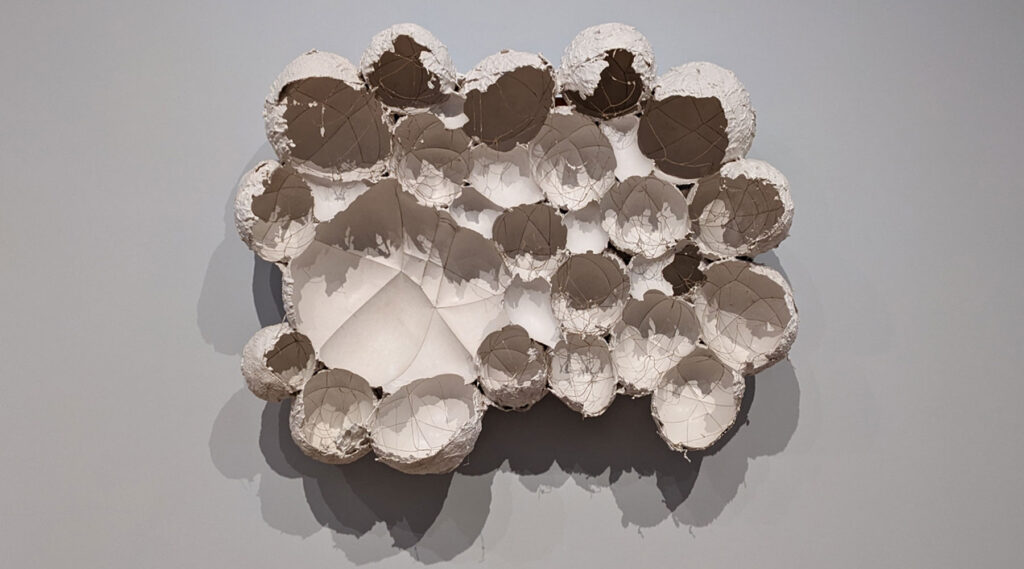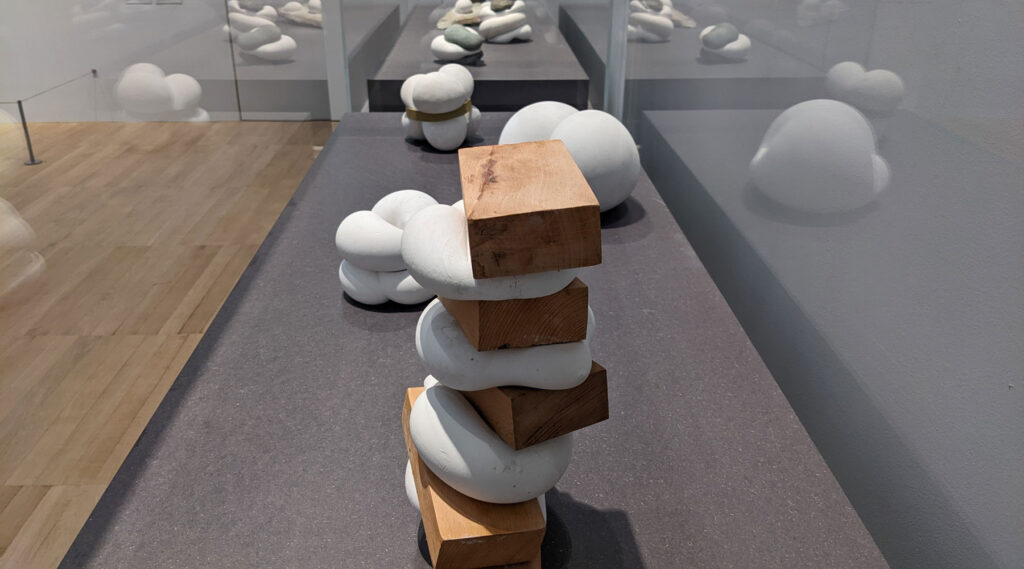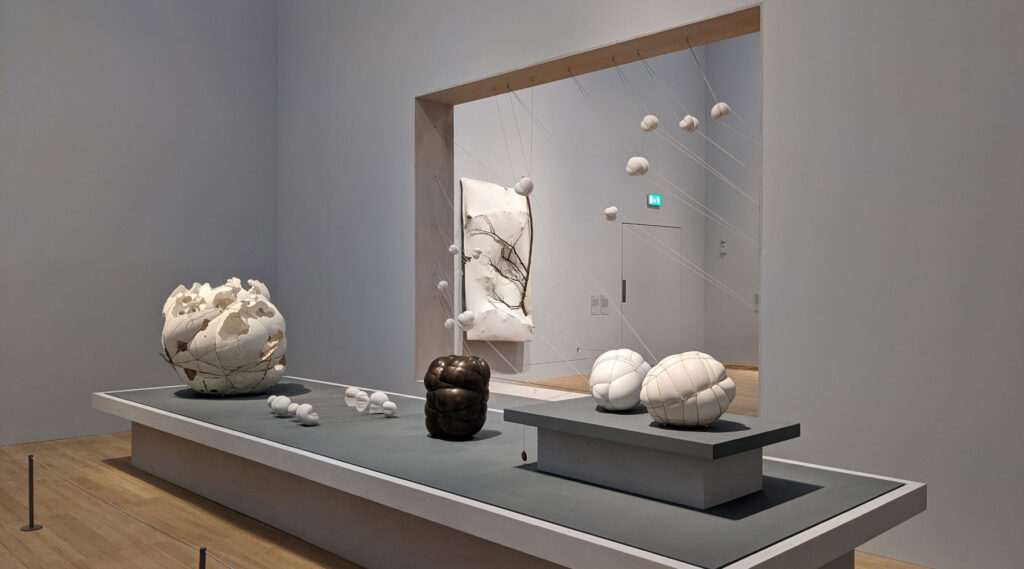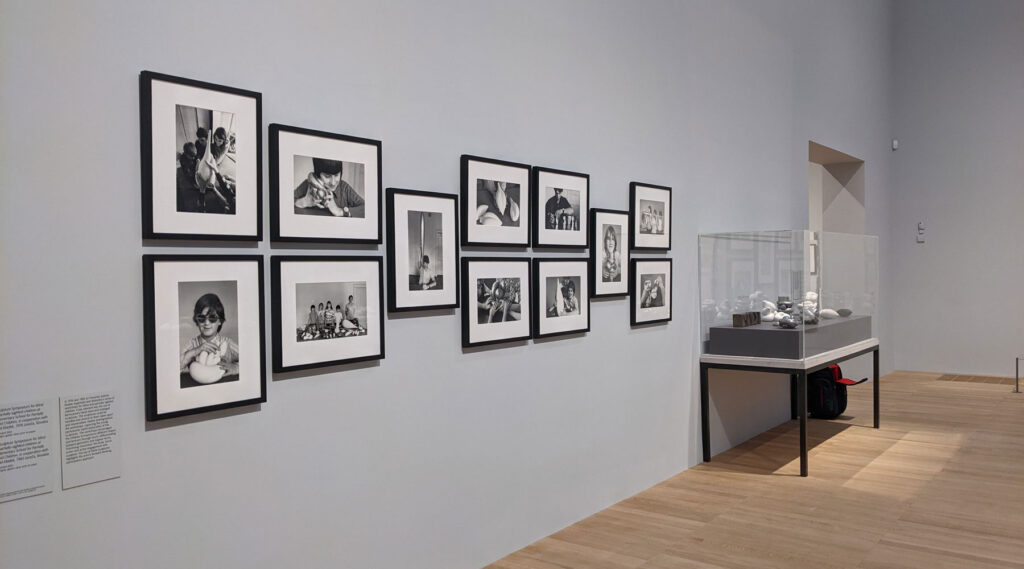A relatively little known Slovakian sculptor, Maria Bartuszová has been given an entire exhibition in the Tate Modern as the art world increasingly recognises her work. A white room filled with, mostly, white curved shapes, balloons, pillows, and softness, for this was an artist who loved to experiment with plaster and balloons.
Although her output was prolific, she spent most of her life in Communist Czechoslovakia, and while every government building — which was pretty much any building — had to have public art associated with it, the art had to uphold Communist ideals. So her public output was restrictive and tightly controlled.
Despite the challenges of living under a totalitarian system and at a time with few opportunities for women artists, Bartuszová built an outstanding legacy of around 500 sculptures. Away from monumental works for the government though, she experimented with smaller domestic sculptures, and a selection are now on display at the Tate Modern in an exhibition that had to be delayed from 2020 due to that damned thing.
From raindrops and eggs to the human body, Bartuszová took inspiration from organic forms and cycles in the natural world – and made extensive use of inflatable balloons and rubber sheets, coated in plaster and then distorted by gravity or pressures she applied to create flowing shapes.
Although there is a core theme, of mainly curved shapes around the exhibition, within that there’s a wide variety of materials and techniques from delicate plaster casts looking more like eggshells through to pillows of plaster that could pass for carved marble that’s been added to with metals and stones.
Also included is a range of rarely seen archive photographs showing how her curved sculptures were able to be used in workshops for blind and partially sighted children. She created sculptures that enabled those unable to see to get to know various forms and textures, to differentiate between geometric and organic forms, to recognise their emotional significance, and to develop an alternative usage of art, with an emphasis on the haptic characteristics of sculpture.
Her later work was dominated by pure, ovoid forms, such as hollowed eggs and shells, and idealized shapes that had been subjected to deformation – crushing, squeezing, breaking, and tying, such as oval forms of fragile plaster matter, constrained with string, and sometimes weighted with small stones.
Much of her work is exceptionally delicate thanks to the production method, so the works are inside glass cases to protect them, and how they managed to move some of the works in packing cases is difficult to comprehend.
The exhibition brings together over 80 of Bartuszová’s delicate plaster works alongside bronze casts and aluminium reliefs – many of which have never been shown in this country before.
The exhibition, Maria Bartuszová, is at the Tate Modern until April 2023.
Adult: £16 | Concessions: £15 | Children / Tate Collective (16-25): £5 | Members: Free
Tickets should be booked in advance from here.










